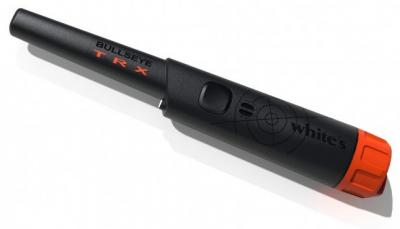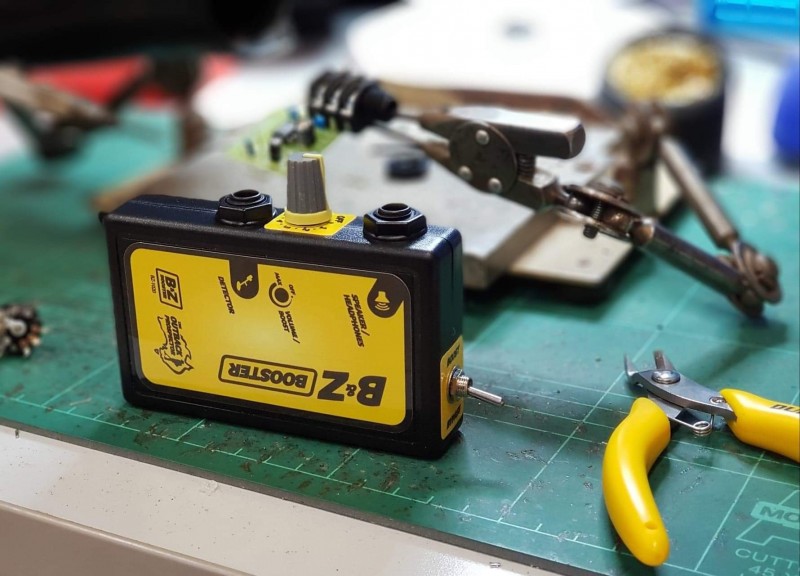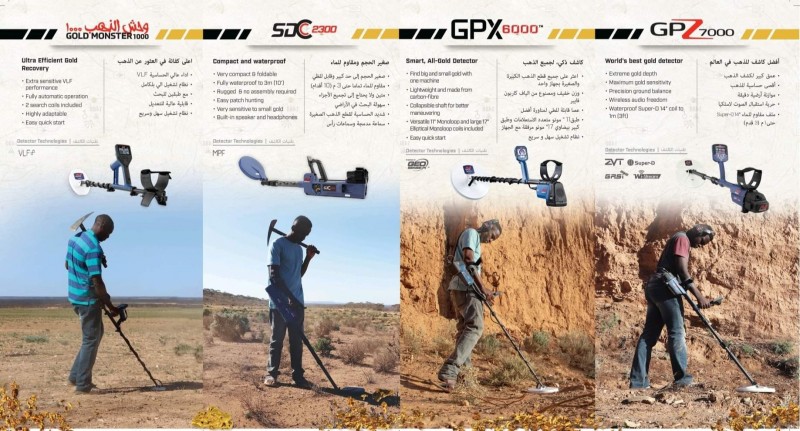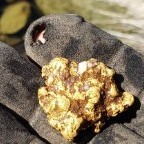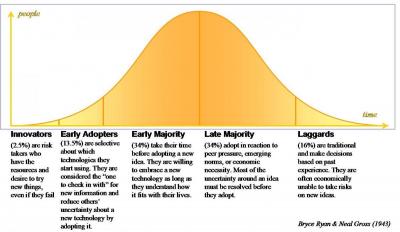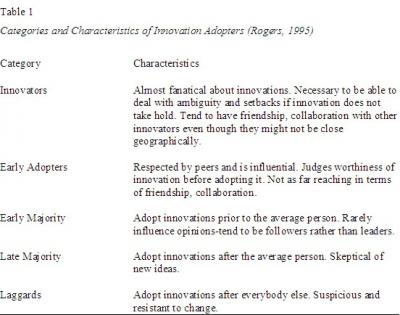Search the Community
Showing results for '"GPX 4500"'.
-
Two different types of detectors. The GPZ 7000 is not a pulse induction machine like the GPX 4500/4800/5000 and 6000. Lately their numbering convention has roughly followed MSRP in Aussie (Vanquish) or US (Equinox/GPX 6000) dollars.
-

Minelab GPX 4500 Discontinued
Steve Herschbach replied to shredmandan's topic in Minelab Metal Detectors
And finally, a year and a half after this thread started..... the GPX 4500 has been removed from the Minelab website. It is now listed on the discontinued products page as being discontinued in February 2021, so this thread jumped the gun by a bit. Note that Minelab services detectors for five years after the discontinue date. The clock is now ticking on the GPX 4500. The GPX 4500 at $2699 was a bargain entry point into PI nugget detecting, and I for one am sad to see the machine go. The GPX 5000 at $3999 is now all that remains of the old school Minelab PI lineup. Minelab GPX 4500 Data & Reviews Surprisingly to me at least, the X-Terra 705 continues as a current product. I'd have thought Equinox and Vanquish killed it off, but there is still sales life in the machine apparently. -
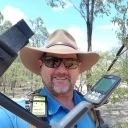
22" GPZ X Coil Concentric Results
Jonathan Porter replied to jrbeatty's topic in Minelab Metal Detectors
James, the hole is there whether you like it or not, the Normal timings do not do well on a range of solid targets at depth (14 inches plus), so you cannot say you’ve covered off on that size if you have not gone back over the ground using Difficult. The same applies to the GPX 5000 and GPX 4500 using Normal over Enhance or Fine Gold. I would also advise American users to go back over deeper ground and use Difficult just to check off on the possibility of a missed decent sized nugget especially in the washes. The 1/2 ounce nugget in the video was a good example of just such a target. (scene starts at 2:10 for those in a hurry 😆) -
After a rather long hiatus (knee replacement) I finally was getting out to do a little detecting this weekend and found that my pinpointer had decided to go on a walkabout. Over the past few months I’ve directed several forum members to opportunities to purchase a TRX and now I needed to find one for me. Not an easy task. There is a used one on Ebay right now with bid already over $200 with five days yet to go….. OK, to the point of this post. Searching around I did stumble across a site selling TRX’s for $55 ea for a lot of 10 pieces, with about $150 for shipping (~$70 ea). Normally I would just move on assuming that this is more Alibaba/Aliexpress knockoffs but I decided to do a little more looking around. They list a fairly wide range of detectors and brands, including a number of MineLab models. My understanding has been that MineLab is very aggressive in shutting down dealers carrying counterfeits. Doing some online searching I didn’t find specific mention of counterfeit TRX’s, though plenty of discussion of Whites detectors, particularly the GMT. The Goldbug 2 and GPX 4500 were also quite popular. Here’s my questions. Do you think there is a possibility this may be a legitimate dealer? Last fall just after White’s announced their closing there were some dealers who were discounting their inventory before Garrett said they would be covering warranty issues. Does MineLab truly aggressively go after dealers selling counterfeits? How much mark-up is there on detectors, and could this be a dealer who is not following the pricing “covenant” or functioning as a middleman to smaller dealers? I will admit that prior to retirement I might have thought about taking a fly at these just for the hell of it, I’ve certainly taken bigger gambles (and losses) on gold stocks. At worst I may have been able to unload them as fakes that work as well as other pinpointers that sell in the $50 range – or just another bad stock investment. There’s always that risk when we buy anything used on EBay, Craigslist, Treasure Classifieds, TreasureNet , etc.,(i.e. the TDI SL I recently bought that wouldn’t ground balance and hopefully can be repaired), and I question the number of “new” gpx4500’s I’ve been seeing pop up in ads lately (really, how many people are going to buy one and then sell it unused at a significant discount?). Well, I’ll keep looking and hopefully a reputable dealer will find some hidden in their stockroom.
-
I recently posted this to another forum and thought it might help benefit others and maybe generate some interesting discussion here. A booster can only amplify whatever the detector audio delivers no matter what anyone try’s to tell you. The inbuilt booster speaker system in the Minelab GPX 4500, GPX 5000 is too coarse for effective use via the Target Volume control, this same control is also used on the GPZ 7000 in conjunction with the WM12 and is also too coarse! I originally popularised the booster speaker concept when developing a series of instructional videos, looking for a way to obtain good audio that allowed ambient noise of a goldfields environment to also come through so viewers could experience as close as possible the way a detector sounds when in use. In conjunction with this I also discovered the benefits of removing the immediate audio from your ears and placing it further away allowing faint signals to come through (similar to a Television sounding loud in the kitchen compared to being right in front of it). Our ears are designed to collect sound, especially sound that is further away, our ears are also more sensitive to variation in pitch similar to our eyes are to movement so being able to hear the threshold at all times as a reference point is very important, but not at the expense of those around you and small target signals. The aim with a booster speaker is to lift up the overall volume of faint deep targets without drowning everything else out, as such in less trashy sites a higher volume can be used in conjunction with the correct threshold level. You need to set the volume to compliment the threshold, which needs to be smooth and stable, if someone can hear your threshold miles away you’re doing it all wrong and negating any advantage as well as driving other operators around you nuts. Best way to go is to set the detectors settings to be smooth and stable, I tend to use conservative Sensitivity/Gain settings along with Volume and Threshold. The Target Volume needs to be kept low to allow the booster to drive the audio without causing distortion, this is especially important on the GPZ 7000. If your detector Target Volume is set to aggressively the booster is then going to amplify that aggressive distorted audio. The threshold needs to be smooth to the ear to start with, if it stutters the amplifier will exacerbate that, if it is too loud it will drown the audio as you boost it. The B&Z booster is best used for single or twin speakers, it has a very good range of amplification with hardly any distortion. This is especially important because you need to use the booster to adjust the overall audio to suit the ambient noise conditions, in quiet conditions you lower the booster volume so the threshold is not dominating, if its windy then you increase the volume so the threshold can be clearly heard. The B&Z booster runs on 2 x AAA alkaline batteries which should last up to 3 weeks at 6 to 8 hours per day, it is in a plastic housing to cut down on any excess metal on your body. The B&Z can be used with headphones, to do so the volume of the detector needs to be lowered so the booster volume can be lifted above 2 1/2 to 3 to avoid noise and hiss from the potentiometer, with the GPX and GPZ machines this can be as low as 6 or even lower if required depending on the sensitivity of the headphones being used. Higher tones tend to require less volume, lower tones more, lower tones (30 and down on Minelab PIs and ZVT) are generally better heard through headphones rather than speakers, this is due to all the natural low frequency noises heard in natural ambient environments, Noise cancelling headphones really compliment low frequency Tones. The audio of the Minelab GPX and GPZ machines is converted to analogue via the speakers, boosted speakers tend to iron out the steppy digital nature of the Minelab audio, this helps a lot with running less noise floor filtering through the Stabilizer or Audio Smoothing controls, which is were all the edge of detection depth performance lays. The B&Z only ever magnifies the pure audio of the detector with no colouring of the audio through filtering, you only ever hear the “pure” audio intended by the designer of the metal detector. Call me a purist but that’s the way I prefer to hear my detector. Hope this helps JP
-
I tripped over this by accident while looking for info. Looks like a simple brochure handout, and what is interesting is the GPX 4500/5000 is missing in action. This might be Africa only, as the old GPX models are now so commonly counterfeited there. The best way for Minelab to address counterfeiting is to not let old models exist for too long, and the GPX 5000 is an ancient design at this point in time. I also suspect that there are increasing issues surrounding the shipping of that massive Li-Ion battery. Long story short, I can see why Minelab would want to discontinue the old GPX models The U.S. is a bit unique in the number of GPX 5000 used by relic and beach hunters, which might keep it viable here for longer than might be the case elsewhere. The GPX 4500 has long been rumored to be on its last legs, but it continues to be listed for sale. Plus, issues surrounding counterfeit detectors are far less severe here than overseas. Still, in the long run it makes sense to discontinue the older GPX models eventually, since the GPX 6000 is a clean break from the earlier designs, with no carryover of coils or other accessory items. This little brochure hints at a probable future without the GPX 4500/5000.
-
It is a classic trade off. VLF gets you pretty good ferrous discrimination, but has issues with bad ground and hot rocks. A good PI will help you with bad ground and hot rocks, but the ferrous discrimination is unreliable by VLF standards. VLF is what it is, and you have a Gold Bug 2 already. An Equinox will give you more depth on larger gold, and more control over the discrimination.... but it will still not be a PI when it comes to ground handling. You already have a GP 3000, and if ferrous disc is your goal, and GPZ 7000 or GPX 6000 will not help you. In my opinion it really just comes down to whether you want to upgrade the GP 3000 to a GPX 5000. Personally, I'd do that just to get the new battery system and rock solid threshold. But if you have any hope of getting decent ferrous disc with a PI, then a GPX 5000 or GPX 4500/4800 are the only real options in my opinion.
-
Not really recommended for relic hunting at the release price without the iron reject feature of the GPX 4500/5000 series (which works really well for relic hunting). Despite the Geosense and ergonomic improvements, I would be hard pressed to recommend it for relic hunting even if it was at the GPX 5000 price point, but that would be more palatable and I would genuinely have to think about it at that point. If it had iron reject, I would spring for the 6000, but would probably buy one of those moderately discounted "used" units dumped by prospecting newbs who thought it was going to be Harry Potter's magic gold producing wand until the realities of what electronic prospecting actually entails became apparent to them. Something I like to call the GPZ effect.
-
I'm in a similar situation with a GPX 5000 with extra coils I bought 3-4 years ago for close to $3,000. It had no factory warranty left though it did have 60 days from the place I bought it. Being relatively new to the platform I wasn't sure the random noises and occasional fits it made weren't more than EMI or something like bad ground patches, etc. After about 6 months and dealing with increasing spurious noise problems I sent it in for a checkup and repair. There wasn't much found to be wrong by the repair place other than straightening an internal switch pin and I thought maybe I was just being hyper sensitive or something. But then my dad bought a brand new GPX5000 and it had none of the issues I was experiencing. So I sent it back for another look since by then the problems had only become more frequent and more intense. I was told after the second check up my GPX would need a new board at the cost of around $2800. At that point I stopped taking it out due to how it became frustrating to impossible after the first 15 minutes to use. I relied solely on my SDC 2300 for future hunts. The SDC makes a great back up unit and kept me in the game. 😀 Missing the ability to cover more ground and use my 2 NF evo coils, I ended up buying a used GPX 4500 for $1500. I figured that was about half the price of a repair of the 5000 and I'd be back in the game for cheaper. My GPX 5000 has been sitting in the garage unused for a couple of years now and I've wondered what I can do with it like get a cheaper repair or sell it off for parts to recoup some of what I spent on it. I'll definitely be very interested to see what you all can recommend to Swegin to help with his GPX situation.
-

Minelab GPX 6000 Full Reveal In February 2021?
Gold Hound replied to Steve Herschbach's topic in Detector Prospector Forum
There are not many areas where I cannot use a monoloop on a gpx 4500 or newer detector and I live in Australia. I have noticed over the years that a lot of hobby operators do struggle in areas that I have no problem in. I observed that most of them were not swining the coil in an even slow mannor. Erattic movements or allowing the coil to move up and down, either from poor coil controll like one edge lifting heigher than the other, lifting then lowering to avoid obsticals or swinging to fast for the ground type. -
For clarification the Q20, Q40, and Quest Pro have been out a few years and the Q30 and Q60 other than profile and look are completely different re-enginnered detectors or so I've gathered on Quest groups. The naming system is confusing as the Q30 might be a better detector than the old Quest Pro and none may perform well in bad dirt thats yet to be seen. The interesting thing is if the Q30 and Q60 are like the Nox 600 and 800 or GPX 4500 and 5000 in that there's no difference in power. Then the Q30 at 14kHz field might be the ultimate value for Civil War relics. Think of a deeper, faster, waterproof, Bluetooth, T2.
-

GPZ And GPX Pricing Compared
Steve Herschbach replied to Steve Herschbach's topic in Detector Prospector Forum
You mean the price of $6000 quoted on the many dealer websites that are now taking pre-orders? Yes, that is the price. The detector I think is Manufacturer Suggested Retail Price of $7499, and dealers may charge up to that if they wish. The Minimum Advertised Price is $6000, which is the lowest price that can be quoted in advertising. However, price fixing is illegal, and once you engage a dealer in conversation, they may legally sell the detector for whatever they want. That’s pretty much the same with most major manufacturers. They control the advertising, but they can’t directly control the final sales price. Dealers can and will charge more than $6000 if an extreme shortage develops. Some dealers were selling the GPX 4500 for over $10,000 back when the Africa gold rush first took off. Don’t think it can’t happen again, and there is absolutely nothing wrong with charging full MSRP. Anything over that, however, is price gouging in my opinion. https://www.consumerreports.org/online-shopping/why-do-i-have-to-put-an-item-in-my-digital-shopping-cart-to-see-the-price/ -

Official Minelab GPX 6000 Page
Steve Herschbach replied to Steve Herschbach's topic in Detector Prospector Forum
That's not like the Coiltek coil price is it Gerry? Seems high to me, and I refuse to pay more than $5999 But thanks for more or less confirming what we all feared. This is not a cheap date. I was hoping for a Equinox style disruptor, but the reality is that doing so would only disrupt Minelab themselves. They long since stopped competing with anyone in the gold prospecting space but themselves. It's actually somebody else's job to disrupt Minelab, but I have a hard time seeing how that happens. Minelab has discontinued product, or current product in such quantity it is almost impossible. Thought experiment. First Texas comes out with new Impulse Gold, let's assume it gives the SDC 2300 a go for performance, but for $1000 less, let's say $2199. What stops Minelab from simply taking the GPX 4500, currently at $2699, and dropping it to $1999? They long since have amortized the development costs, and it is now a pure calculation involving manufacturing cost. There are a dozen ways Minelab can respond to anyone looking to threaten their turf in any serious way, and that's why it is a risky thing to spend a lot of money to go toe to toe with them. They can just move the goal posts any time they want in response. I'd still like to see some worthy competition to make that possibly happen, but when I look at the big picture, especially from a business standpoint, Minelab is only making sensible pricing decisions any sane business person would make. In a weird way we should be thankful, because dumping millions of dollars into the development of a single model is beyond the resources of most companies. If Minelab was not to do it, I do not know who could. It is unrealistic to expect Minelab to do that, and not expect a reasonable return on it's investment. But I still wish it cost less! Even though that is actually shooting myself in the foot a little. High prices keep the market from getting flooded too quickly with the latest and greatest, giving me a few other innovators and early adopters that little bit of lead time we crave. Once again the games begin, and people have to consider where they are on this chart. I will leave this with my party line - this website is not intending to push, promote, or insist that people be early buyers. Just the opposite in fact. Anyone with any doubts, any questions, any concerns, should hold onto their wallet until those concerns have been fully addressed. -

Challenge Completed And Missed Nuggets Found
GotAU? replied to jasong's topic in Detector Prospector Forum
I was trying to demo my GPX 4500 I was selling at Primm NV, and everything was working fine until all of a sudden EMI got so bad nothing worked. It wasn't until I was leaving after almost a no sale that I saw I was standing near a Tesla charging station and a car had pulled in for a recharge. -
Even though your question appears as a “general” coil question, since this is a GPX thread, I will answer your question in the context of a GPX PI detector. We are talking primarily the GPX 4500/4800/5000 models. We haven't seen iron rejection advertised as a feature on the GPX 6000 and although it appears the GPX 6000 can utilize DD coils based on the menu settings, we haven't yet seen any DD coils announced or pictured that are compatible with the GPX 6000. PI detectors typically use a single Monoloop winding that acts as both the transmit and receive coil. Pulsed Induction as the name implies, uses pulses instead of a continuous wave like the more common VLF induction balance (IB) detectors to transmit the magnetic field into the ground. A brief pulse is transmitted and then the delayed receive signal is analyzed before a new pulse is transmitted into the ground. The process is so fast that the rapidly repeated pulse/receive cycles appear to be continuous to the user. DD coils on a PI enable the use of separate transmit (left “D”) and receive (right “D”) coils to be used analogous to the IB detectors. The DD enables use of the iron rejection feature on the GPX 4500/4800/5000 model detectors released before the GPX 6000 (GPX iron rejection cannot be used with monoloop coils). But because of the pulsed nature of the transmit signal, the coil can also be re-wired on the fly (on GPX detectors) using a switch to make the DD emulate a Mono coil by making use of both “D’s” to comprise a “bigger” receive coil that can enhance sensitivity (at the expense of iron rejection accuracy) or wire the two “D’s” in opposite polarity to enable EMI noise cancellation (also at the expense of iron rejection accuracy and overall target sensitivity). So in effect I have heard of using two receive coils (as described above) but not two transmit coils. I don’t think there would be any advantage to doing it that I could see. Using two transmit coils would seem to be inefficient from a power usage standpoint due to the resistive power losses in the copper and the whole point of the transmit pulse is to pump as much power as possible into the ground to maximize penetration depth, while the objective of the receive coil is to maximize sensitivity and that is actually enhanced by more copper.
-
Any bets on price? The GPX 5000 currently sells for US$3999 and since they are calling this the GPX 6000 the next number up might be $4999 Yet Minelab has a long history of pricing the GPX units to match the model number, and if that holds true then maybe $5999? The grudge match of 2021 might be the GPX 6000 at $4999 plus versus the Fisher Impulse Gold at I am guessing under $3000. I'd bet on the Minelab having the performance edge, but this is the first time Minelab might be facing serious competition on both price and performance. On the other hand Minelab got super aggressive with Equinox pricing. If they are serious about wanting to continue the pain at the competition, they could introduce the GPX 6000 at $3999 and drop the GPX 5000 to $2999, in effect replacing the to be discontinued GPX 4500. That would be a one-two type knockout blow against anyone looking to compete against Minelab in this arena. Pure speculation on my part. I have consistently underestimated what people will pay for the Minelab name. I never in a million years thought people would shell out over $10K when the GPZ first came out, but you had to wait in line to get one. Equinox was therefore a shocker when it came in at half what I thought it should sell for.
-
Thanks for the advice Phrunt, it has indeed been a bit of a battle getting a hold of one.. am still hoping the GPX 4500 and 500 will drop in price a bit as they're still unaffordable at the moment.. Who could i ask about just buying the control box? does the manufacturer sell them separately? is there any truth to the rumour that there's a P4 in the works? it'd be the bee's bollocks if it was..
-
Whites Electronics stop operation in June of this year. Based on conversations with representatives, Whites is looking for a buyer and contemplating other options. For all practical purposes, they are currently not in business. Visiting White's web site, you will notice they have nothing in stock. I seriously doubt they will not debut any new detectors in the near future. It breaks my heart. I think most of us in the detecting hobby saw this coming. I don't understand why White's didn't. They let themselves get woefully behind the 8 ball in the gold detecting arena. The GMT is still there best machine. The TDI, first generation design PI machine, is a MAJOR disappointment hunting gold in a highly mineralized desert. All you beach hunters and relic hunters will enjoy this machine but it is lousy at picking up small gold. I was so hoping Whites would have come up with a PI machine at least as effective as the GPX 4500, which I own. The reality is that the whites GMT is still their best Gold finding machine, not the TDI and not the 24K (me too VFL) with the added wingdings that don't make it go any deeper. Dammit Whites............This breaks my heart after all these years. Please come back stronger without some large corporate or foreign buyer.😥
-

Minelab GPX 4500 Discontinued
Steve Herschbach replied to shredmandan's topic in Minelab Metal Detectors
Well, although still listed on the Minelab website, most legitimate dealers are showing the GPX 4500 as out of stock. There are many still for sale, but I have to think the odds are high they are counterfeit at this point unless being sold by a very trustworthy source. Buyer beware. How To Verify A Minelab Is Genuine -
I tripped over this at the Minelab website: This posting, together with the label, also provides an indication of which Minelab products are protected under the Patents Act of various other countries. Product(s) US Patent Number Australian Patent Number GPZ 7000 6636044 783737 7310586 8106770 2011200515 D686924 342365 (Design) 2009262370 2012101855 9547065 2013201330 GPX 4500, GPX 4800, GPX 5000 2011200516 8106770 2011200515 6636044 783737 SDC 2300 2011200516 8106770 2011200515 6636044 783737 D652330 9829598 2014274608 9547065 2013201330 Gold Monster 1000 7432715 2005276953 CTX 3030 7310586 D686924 342365 (Design) 8854043 2013201248 9239400 2013200451 E-TRAC 7310586 X-TERRA 305, X-TERRA 505, X-TERRA 705, X-TERRA 705 Gold Pack, X-TERRA 705 Dual Pack 7432715 2005276953 EQUINOX 600, EQUINOX 800 7432715 2005276953 7579839 9366779 2014218372 Vanquish 340, Vanquish 440, Vanquish 540, Vanquish 540 Pro-Pack 7432715 2005276953 7579839 9366779 2014218372 GO-FIND 20, GO-FIND 40, GO-FIND 60 GO-FIND 22, GO-FIND 44, GO-FIND 66 7432715 2005276953 D756247 360432 (Design) 9557390 7310586 National Geographic Pro Series Metal Detector 7432715 2005276953 D756247 360432 (Design) 9557390 7310586 AN/PSS-14 6636044 783737 F3, F3 L, FE S, F3 LS, F3 UXO, F3 Compact 7310586 6636044 783737 F3 Compact D652330 F3Ci 7432715 2005276953 D652330 STMR Array 6636044 783737 7310586 MDS-10 7432715 2005276953 7579839 9366779 2014218372 Other patents that may apply to the above products 7474102 7652477 7791345 8063777 8237560 8614576 2007272230 9250348 9348053 2017279664 9429674 2014218370 10078148 2014268189
-

SDC 2300 Scores 31 Ounce Gold Nugget
geof_junk replied to Steve Herschbach's topic in Detector Prospector Forum
You might even hear it if your earphones are hanging around your neck. I got a 5 ounce specimen with a 10" double D coil on an old Garret deepseeker in very hot soil in the golden triangle Victoria Australia at 19" deep. All my other nuggets and specimen larger than it were a lot shallower. Any nugget over 100 gm are well in your GPX 4500 range at 14". All you have to do is go over it, that the hard bit. 😀 -
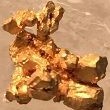
SDC 2300 Scores 31 Ounce Gold Nugget
Desert Dawg replied to Steve Herschbach's topic in Detector Prospector Forum
I think a 32 oz nugget would signal down to 28" with a gpx 4500. If it has a lot of solid gold in it. -
I've been updating this guide for almost twenty years now. It started back when there was little to offer in way of objective opinions on gold nugget detectors. That's not so much this case these days, but this is still the most comprehensive roundup available, along with some admittedly personal opinions about the models. These days we honestly have almost too many options, which can be confusing for beginners. So a few years ago I added my own short list of three models I recommend as safe picks for anyone around the world. The list was updated mainly to change my notes on the various Fisher 19 kHz models, where oddities in the First Texas marketing have now left the Gold Bug models high and dry as other FT 19 kHz models are available with better prices. I added warnings that the Minelab X-Terra 705 and GPX 4500 are in the process of being closed out and discontinued. Also added a big warning up front about counterfeit detectors - very common now in the nugget detector world. See the full guide here
-
Hello, So I am a beginner and amateur, but interested in finding gold as well as old coins, old bullets from muskets etc, relics, etc with a metal detector in Sweden. I have many thoughts about this, which I hope you can help me with, so I would be very grateful. I list my thoughts and questions below. 1. I was thinking about hearing what you think about the possibility of finding natural gold (gold grains, etc.) in Sweden in, for example, streams, etc., with a metal detector adapted to search for and find small gold grains? I found a website that has an article on it: http://www.detektorist.se/metalldetektor-guld/ If I understand them correctly, they mean: - The gold you find in Sweden unlike, for example, the USA and other countries (where you can often find the whole gold nuggets, unlike in Sweden where you find mostly small gold grains if you are lucky?) Is too small for a metal detector to find or almost impossible. It needs to be at least 3 milimeters for a metal detector to found it and may only be a few cm below the ground. - And that gold is not flattened in Sweden, which makes it even more difficult to find. - That gold is most often found in mineralized soil, which makes it difficult for the metal detector to get real signals, distinguish gold from other metal, etc. With that in mind, do you think it's worth it? Or waste of money? Or do you think it is wasteful and almost impossible to find gold in Sweden with a metal detector even if it is adapted for it? I am also interested as I said to find old coins etc. Should I put down the idea of finding naturally gold in Sweden, and buy a cheaper but good detector that is more focused on old coins, old bullets from muskets etc, than one that is most focus on finding natural gold? 2. Here I can buy in Sweden, "Professional metal detectors - metal seekers for prospectors looking for gold and minerals": https://www.guldstrom.se/sv/guld-mineralletning The metal detectors for seeking gold is: - Minelab Equinox 800 - Minelab Gold Monster 1000 - Minelab GPX 4500 - Minelab SCD 2300 Guld detektor - Garrett ATX - Minelab X-Terra 705 - XP ORX metalldetektor - Gold Rush tour 2020 Australia - Minelab GPZ 7000 Gold detector - Minelab GPX 5000 - Fisher Gold Bug 2 - Garrett AT Gold Would you recommend any of these? 3. I did send the swedish company an email and they answered: "Without a doubt, the best detector right now is the Minelab Gold Monster 1000 so this is the one to look for if you want to look for gold in Sweden. It also manages to find mineralized stones and it can differentiate between mineralized stones and solid metal. It is also excellent for exploring in streams and streams and the search coil is waterproof so it works great. The GM 1000 automatically adjusts itself so there are no knobs or buttons to turn on but just "whip and drive". You can find a really small gold grain -1mm in about 5 cm A larger gold grain of 3mm can be found in 10 cm A large gold grain of 4mm can be found in about 15 cm" If it is true on detektoristen.se that a gold grain must be 3 mm in Sweden, then the Minelab Gold Monster 1000 finds a gold grain of 1mm of 5 cm, 3 mm of 10 cm etc., so it does not seem to be a problem? In addition, it seems to be adapted to find gold in mineralized soil. So do you think it can work well to find gold in Sweden with a metal detector like Minelab Gold Monster 1000, or what do you think? Thank you very much.



